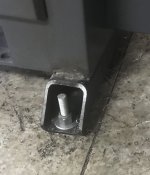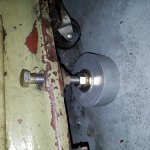I'm 6"2' and I find myself constantly stooped over when doing work on my lathe. I'm getting ready to build a new shop. Can I pour an extra 3-4 inch thick area where I'm going to put my lathe. Will that be enough to support it? It's a Matthews 13X40 GT so not a lot of weight. It's around 1350 lbs. on the stand. Just curious if that can work if reinforced properly.
I figured I'd get a solid answer here. All advice, tips, etc would be appreciated.
Thanks Waverly
I figured I'd get a solid answer here. All advice, tips, etc would be appreciated.
Thanks Waverly



